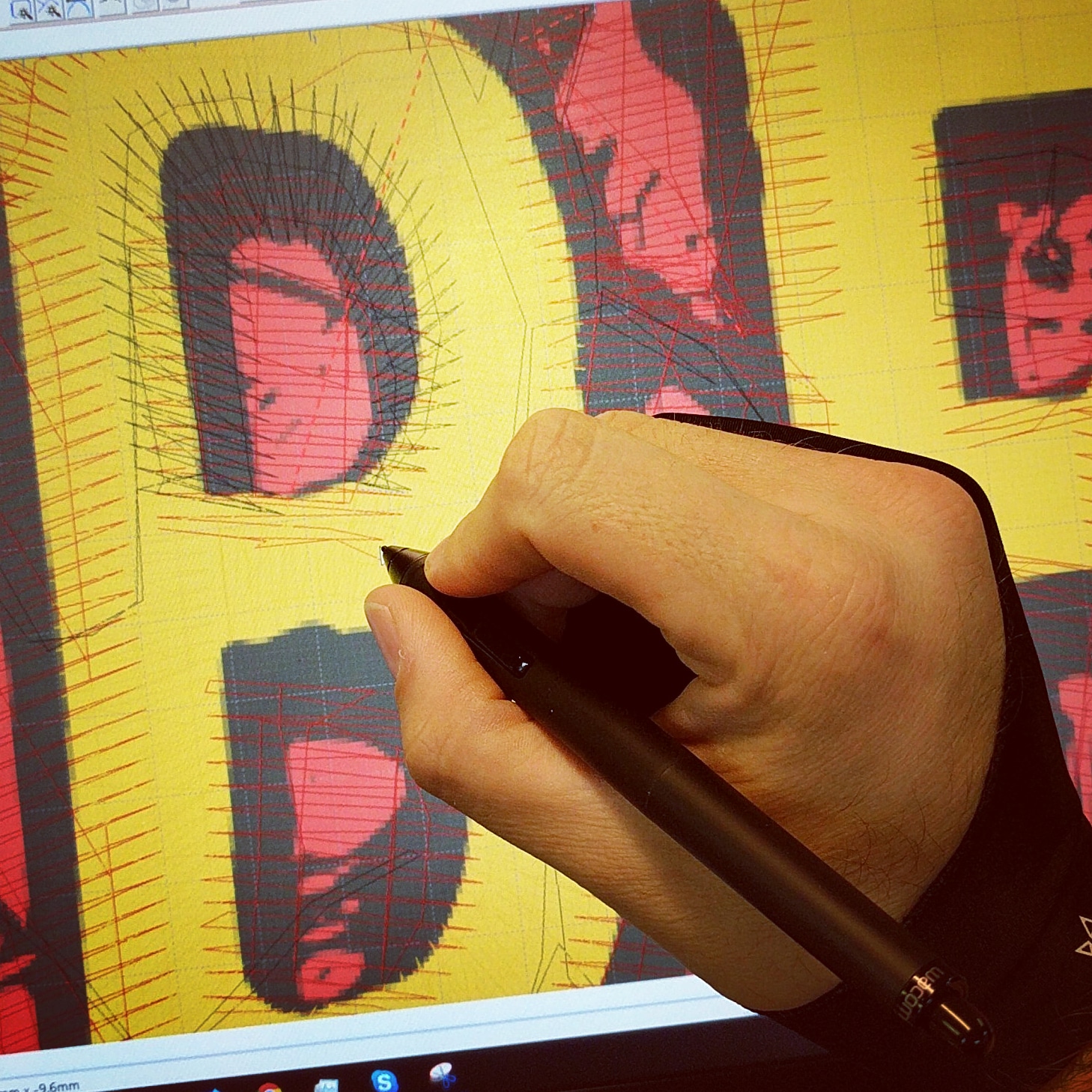Comprehensive Digitizing for Embroidery: From Style to Stitch
Wiki Article
Grasping the Needlework Digitizing Refine: Your Ultimate Guide
Embroidery digitizing is a thorough craft that requires accuracy and knowledge to equate detailed designs into digital layouts for equipment needlework. As craftsmens get started on this journey to grasp the embroidery digitizing process, a detailed understanding of the essentials establishes the structure for quality.
Comprehending Embroidery Digitizing Essentials
Needlework digitizing basics develop the structure whereupon detailed designs are translated into machine-readable formats for specific sewing. This first action in the needlework digitizing procedure is critical for making certain that the final embroidered product is a faithful representation of the initial layout. Recognizing embroidery digitizing basics involves grasping key ideas such as stitch types, stitch direction, thickness, rug, and draw payment.Sew types play an essential duty in establishing the visual and textural outcome of the stitched layout. By picking the proper stitch kind, whether it be satin, fill, or running stitch, digitizers can accomplish the preferred result and boost the total top quality of the needlework. Furthermore, stitch instructions affects the circulation and measurement of the layout, while thickness establishes the spacing and protection of the stitches.
Moreover, rug sewing gives security to the layout by protecting the fabric and preventing distortion during the needlework process. Draw settlement is one more vital consideration to counteract the all-natural tendency of fabric to agreement when stitched. Understanding these needlework digitizing fundamentals is fundamental for developing professional-quality embroidered products.
Choosing the Right Digitizing Software Application
Picking the appropriate digitizing software is a critical choice that significantly affects the performance and quality of the embroidery digitizing procedure. Digitizing for Embroidery. When selecting the ideal digitizing software, it is crucial to think about elements such as the complexity of layouts you plan to create, the user-friendliness of the software application, the level of client assistance supplied, and the compatibility with your needlework makerThere are numerous digitizing software options readily available in the market, varying from standard programs for newbies to innovative software program for specialist digitizers. Some preferred options include Wilcom click reference EmbroideryStudio, Hatch Embroidery Software, and PulseID. These software offer a large range of devices and attributes to assist you develop intricate designs easily.
Prior to making a choice, it is suggested to check out the different software alternatives via cost-free tests or demonstrations to figure out which one best suits your needs. Additionally, reviewing evaluations and seeking recommendations from experienced digitizers can provide beneficial understandings right into the staminas and weaknesses of each software (Digitizing for Embroidery). By meticulously examining your demands and contrasting the attributes of different digitizing software, you can make an enlightened option that improves your needlework digitizing operations
Digitizing Devices and Methods

Optimizing Design Settings for Embroidery
Understanding the details of layout setups is fundamental in achieving optimal results in the needlework digitizing process, structure upon the foundation laid by comprehending digitizing devices and techniques. When enhancing layout settings for embroidery, it is crucial to consider aspects such as stitch kind, density, underlay, pull payment, and enrollment. Enrollment settings line up various components of the design accurately, preserving total layout integrity.
Troubleshooting Common Digitizing Issues
When running into common digitizing concerns throughout the embroidery process, it is essential to see post comprehend the origin causes and execute reliable solutions quickly. One usual trouble is stitch density problems, where stitches might be also dense, causing the material to tighten, or also sparse, resulting in spaces in the layout. Readjusting the stitch density settings in the digitizing software application can aid resolve this problem.One more constant obstacle is thread breaks during the embroidery process. This can happen as a result of you could try these out various reasons such as incorrect tension settings, boring needles, or utilizing low-grade string. Making certain correct maintenance of the embroidery device, including normal needle changes and tension adjustments, can reduce the incident of string breaks.
In addition, layout enrollment mistakes can cause misaligned components within the embroidery design. Checking the design alignment in the digitizing software and making necessary adjustments before sewing can aid in preventing this concern. By addressing these usual digitizing concerns without delay and properly, you can make sure a smoother needlework process and premium completed products.
Conclusion
To conclude, mastering the needlework digitizing procedure needs a solid understanding of the basics, the appropriate selection of software program, and expertise of tools and methods. Enhancing design settings and repairing usual digitizing problems are essential action in ensuring top quality embroidery outcomes. By complying with these steps faithfully, one can attain accuracy and efficiency in the digitizing process.Report this wiki page